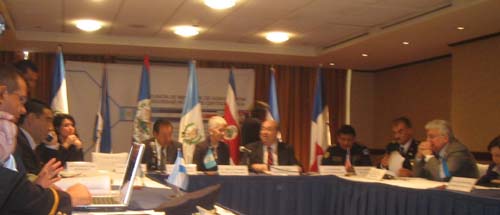8 Central American presidents mandate Interpeace to develop youth gangs/maras strategy

In recent years, juvenile gangs have caused both security and public health problems in the northern countries of Central America, with Guatemala, El Salvador and Honduras being the worst affected. Following the civil wars that affected the region in the 1980s, gangs also known as Maras (Spanish for "gang" or "group") became a real source of concern for governments and civil society.
Although violent youth gangs already existed in these countries before the end of the military conflicts, the constant migration between these Central American countries and the United States brought with it new cultural models for gang activities developed on the streets of Los Angeles, California. These groups have evolved into an informal transnational network of violence.
So far the response to youth gangs has been ineffective. The combination of "hard hand" or "iron fist" policies with a lack of preventive policies, unfortunately, is having just the opposite effect and does not resolve the underlying problem. Hence there is an urgent need to generate public policies that will sustainably tackle the issue and that respect human rights.
However currently there is no platform for the various actors (governmental and non-governmental) to come together to develop strategies and proposals. This is precisely the strategic objective and distinctive contribution of Interpeace's Youth Gangs programme. Interpeace's youth gangs programme in Central America will focus on Guatemala, Honduras and El Salvador. It seeks to use its participatory and inclusive methodology to create platforms where the different organizations and government sectors working on the youth gang issue can meet to develop holistic policies (including prevention) at the national level.
At the regional level, Interpeace received a mandate from the 8 Presidents of Central America through the Central American Integration System (SICA) to develop a regional strategy to address this transnational issue.
Specifically it has been mandated to: design and draft the regional strategy for a holistic response to youth involved in violence to be presented for signature of the Presidents of the Region; and to facilitate the process of consultation, dialogue of and consensus on such a regional strategy between state institutions and civil society of the region.
These efforts were successful as the Regional Strategy was approved by the Head of States of the Region at their Summit of December 07 in Guatemala.
